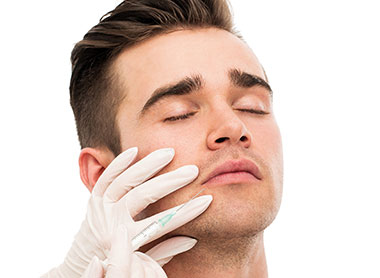After having described a number of potential consequences of nose surgery, you should realize that the vast majority of procedures go as scheduled. The chances are excellent that you’ll be satisfied with the surgery. Still, you must take into account you will have to go through a transient period of waiting or even feeling unsatisfied because you cannot see immediate effects. People feel this way because they are not used to their new appearance distorted with initial swelling. After these complications pass away, the patients, having changed the most prominent feature of their face, often have higher self-esteem, feel more comfortable and happy with their body.
- Face - introduction
- Eyelid Surgery
- Ear Reshaping Surgery - Otoplasty
- Face and Neck Lift
- Nose reshaping surgery
- Lip Augmentation
- Gallery
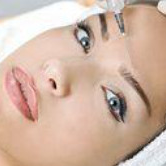
Nose reshaping surgery
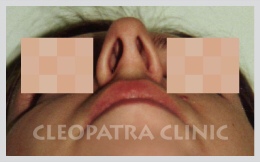
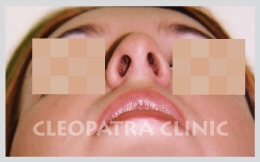
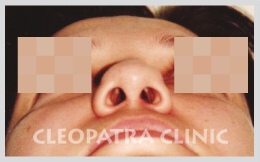
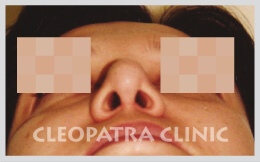
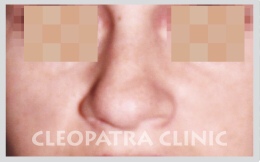
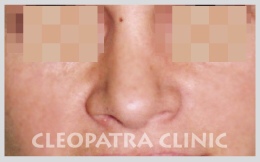
Gallery
Removal of nose bum, reduction of nose, female 50 years
before the procedure
after the procedure
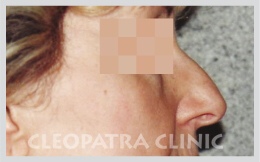
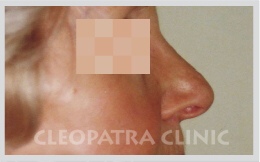
operation of the hard and soft nose, removal of the nasal sac in the patient over 50 years - 3 months after the procedure
before the procedure
after the procedure
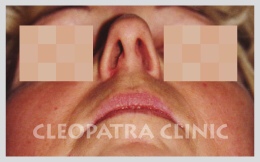
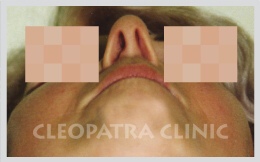
3 months after the procedure
Reduce nose height, remove nasal bumps
before the procedure
after the procedure
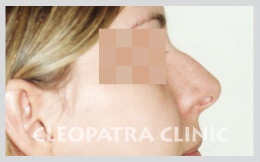

operation of hard and soft nose, decrease of nose height with removal of nasal bumps - 3 months after the procedure
before the procedure
after the procedure


3 months after the procedure
Operations - Boxing nose including bones with eagle treatment of respiratory disturbances by implant medpor
before the procedure
after the procedure
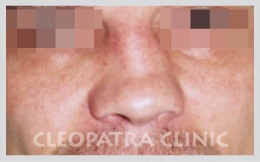
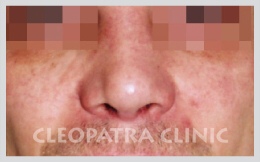
reoperation of the collapsed nose after eagle operation of the nasal septum
supplementing the missing artery with artificial implant - medpor - 3 months after the procedure
before the procedure
after the procedure

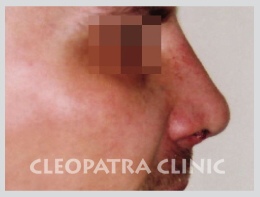
3 months after the procedure
before the procedure
after the procedure
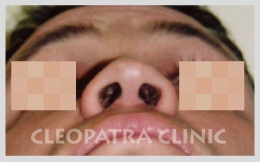
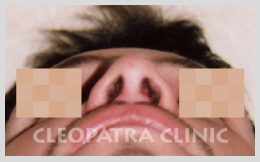
3 months after the procedure
Operations - Congenital asymmetry of winged cartilage
before the procedure
after the procedure


operation of the hard and soft nose deformity of the soft part is caused by the inherent asymmetry of the winged cartilage - 3 months after the procedure
before the procedure
after the procedure


3 months after the procedure
Narrowing of the wide tip of the nose
before the procedure
after the procedure
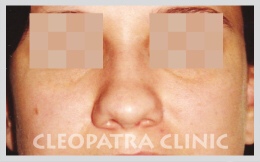
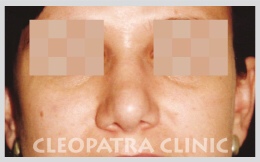
operation of hard and soft nose narrowing of extremely wide tip of nose - 3 months after surgery
before the procedure
after the procedure


3 months after the procedure
Reoperation after another workplace - only soft parts of the nose
before the procedure
after the procedure
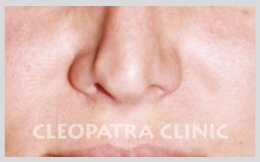
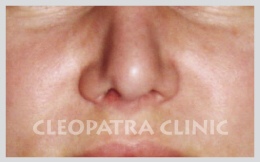
reoperation of bad nose results from another workplace
adjustment of the soft part of the nose through the cartilage - 3 months after the procedure
before the procedure
after the procedure
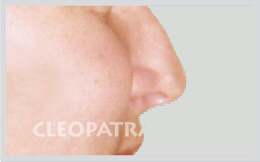
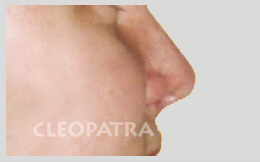
3 months after the procedure
before the procedure
after the procedure

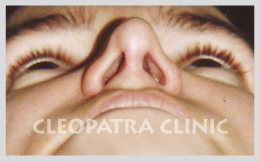
3 months after the procedure
Reoperation after another workplace - the entire nose with an implant - a medpour
before the procedure
after the procedure
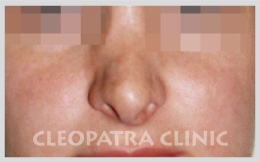
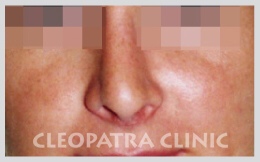
very heavy nose removal from operations from another workplace
very heavy treatment very heavy 5-fold reoperation using combined grapple medpor - 3 years from the 1st operation of operations from another workplace
before the procedure
after the procedure
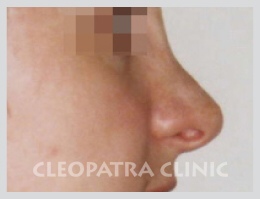
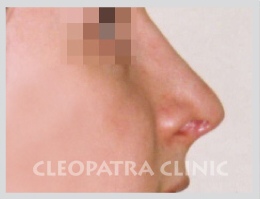
3 years from the first surgery
before the procedure
after the procedure
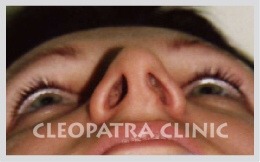
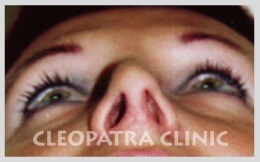
3 years from the first surgery
Introduction
Actor Adrien Brody will probably never get his very prominent one ‘done’, because it suits his face…and it’s even his ‘trademark’. People have speculated for years that Tom Cruise has had his surgically reshaped. England Rugby player Mike Tindall has had his broken at least five times, fixed three times, and his now happy to let it lie ‘squashed’. Rocker Ozzy Osbourne’s had his ‘done’, as did actors Zac Efron, Cameron Diaz, Salma Hayek, and Winona Ryder. Beautiful Olympic gold medallist swimmer Rebecca Adlington’s was cruelly joked-about. Yes, we’re talking about noses.
Nose surgery involves such surgical modifications which transform a nose into optimum anatomical proportions. Or, such surgery can change nose size according to your wishes & ideas. At the outset, it’s necessary to point out that not all ideas are fully realisable. It is the most popular, and sought-after, facial cosmetic surgery procedure.
The reason for undergoing this operation is the dissatisfaction with the appearance of one`s nose which may not be in ‘balance’ with the face. Someone can feel uncomfortable because his/her nose is too big, wide or high. Other patients choose removing of a nasal bump, or narrowing of the nasal tip. What is more, someone can feel that everybody is staring at his/her nose, and even sometimes may hear out-of-place nose-related jokes. This all can result in lower self-confidence, and even in mental complications including depression.
There are two major groups of reasons for nasal deformations – these are hereditary, & acquired defects. The first category includes imperfections inherited from parents, or ethnic background. The second one covers those defects that were acquired due to injuries or previous operations, and (only exceptionally) caused by illnesses. In all cases, a distinctive nose of any size is connected more or less with masculine features. And that is why, should it be the case of a woman`s nose, it may give the woman`s face rather a less-than-feminine appearance.
In the vast majority of cases, both men & women want to have a normal nose of an ordinary, even attractive, shape. They’d prefer a nose-shape that will complement their face rather than be the dominant feature. In his practice, Dr. Zakout, with his colleagues, appraise even other different requirements: less frequently, though.
Am I a good candidate for nose surgery?
Only an examination can establish this. Nose surgery is limited by age – we acknowledge the minimum age as 18 as this is roughly when a person has matured physically, for the most part. The upper age limit can vary. One must realise that some surgery is carried out internally via the nostrils usually: general good health for such an operation is a requirement. The surgeon needs to assess if any excess skin produced during surgery is to be removed, or not removed. Thus it is necessary that the main body of skin is able to heal by itself. (Illnesses such as squamous cell, and basal cell growths near-or-upon the nose may, or may not, need a replacement skin-graft. Such a graft will depend upon the size of the removal site, for example. If such surgery was performed upon the patient in years-past, such a patient newly wishing for nose-reshape surgery will have to have realistic expectations, and disclose previous surgeries to the plastic surgeon.)
According to expertise, the upper age limit corresponds to the age of 35. Nevertheless, patients over this age should not give up, the surgery is available even for people far beyond this age. Who are of good general health. A lot of patients over 50 have already undergone this intervention at Dr. Zakout’s Cleopatra Clinic. In these cases, it is even more important to weigh up the pros & cons, as well as the extent of the procedure. During the consultation, you will be asked about your medical history, especially focusing on your previous nasal interventions or injuries. If your wish is a second, corrective nose surgery, there must be a gap of at least 6 months (ideally 1 year) between these two operations. Furthermore, your respiratory system will be examined, along with checking that you don’t suffer from any nasal obstruction. Another thing to examine is the condition & position of nasal septum, which tends to cause respiratory problems.
In many cases, this can be solved through nose surgery with ORL doctor participation. Then we will ask you why you aren’t satisfied with the shape of your nose. Removing the nasal bump, reducing the size & reshaping a big nose, are the most common requests. Corrections of previously operated-upon noses, either cosmetic or ORL interventions, are not rare, either. Increasing the nose size is required by some people, occasionally.
The biggest risk while undergoing any plastic surgery procedure is that the surgeon does not perform exactly what you have in mind. This can be considerably avoided by conveying your exact ideas and wishes to us. Explain in great detail about what you do not like about your nose. If you do so, we’ll do our best to explain what can be done, what difference the surgery will or will not make, and even suggest other ways to help your nose look better, which you may not know about.
Keep in mind that our goal is to reshape your nose so that it will look attractive & symmetrical in terms of shape & size. Therefore we will bring it into balance with the rest of your face, while at the same time following normal anatomical proportions. There are some people who arrive at the consultation with photographs of a nose they would like to have. This can give the surgeon a good idea of what your expectations are. But you must understand that everybody has a different nose which makes it impossible to turn a big, high & wide nose with a thick layer of “spongy” skin into a tiny little one.
What does nose surgery involve?
Nose reshaping surgery can be performed on the basis of two surgical approaches. The ‘closed approach’ leaves scars only on the nasal mucosa, but this technique’s more difficult for the surgeon to see within the inner nose, which can result in less accurate results. On the other hand, the ‘open approach’ leaves another tiny little scar on the nasal septum skin in addition to those on the mucosa. Formerly, Cleopatra Clinic’s Dr. Otakar Lucák used the closed approach but then moved on the open one, and came to the conclusion that the open approach to nose surgery definitely brings better surgery results! Dr. Zakout is of this same opinion.
When the procedure involves narrowing the span of the nostrils, other external scars around the wings of the nostrils may be occasionally left. These scars are normally very well hidden in the natural crease given by the nose position. Removing a nasal bump gives a new profile to the nasal bridge. It can be nearly flat or slightly in-curved (inverse ‘camber’ shape). It depends on the patient’s preoperative wish. Then it is usually necessary to shift the lateral nasal bones inwards so that the bridge is not too wide after removal of the bump.
A small portion of patients experience more complicated breathing through either left or right nostril. This can be later corrected by moving the septum. Finally, the size and shape of the nose tip, involving cartilage beneath the skin, is corrected – it is essential to modify the tip so that it goes with the new profile. After completing the surgery, small dissolvable stitches are used inside the nostrils on the mucosa and non-absorbing stitching for the little skin scar; then both nostrils are filled with tamponades of oily gauze. These work to stop any remaining surgical bleeding, to support shifted/healing bones & modified cartilage, and serve as counter-pressure against the splint encasing the outside nose. In spite of these precautions, noses continue to bleed for several hours after surgery. Atypical, distinctive longer-term bleeding following nose reshaping surgery, is indeed, very rare.
What anaesthetic is used?
Nose reshaping surgery is usually carried out under general anaesthesia, and requires an overnight stay in the clinic. Local anaesthesia is used only exceptionally for smaller interventions such as narrowing the span of the nostrils, scar correction and other minor corrections. In the latter case, it is possible to perform the intervention on out-patient basis. At Dr. Zakout’s Cleopatra Clinic, nose surgery procedures are carried out purely under general anaesthesia.
How long does nose surgery take?
This procedure takes between 1 hour-to-90 minutes.
What will happen after the surgery?
After the surgery you will wake up in a bed, your head in a higher position & supported by a couple of pillows. Thus the postoperative bleeding & swelling around the nose is reduced. You will realise you cannot breathe through your nose. This is due to packs in your nostrils. Until they are removed after 3 – 4 days, you will have to breathe through your mouth. A lot of patients consider the packs the most uncomfortable thing about the whole surgery because you’re compelled to breathe through your mouth. It is not any kind of pain that nose job patients have concerns-about, largely . Quite the opposite; noses do not usually cause any pain after surgery. Mostly, just one analgesic tablet relieves all problems.
Even after removing the packs you will have the feeling of stuffy nose, which happens as a consequence of post-surgical swelling of both outer & inner parts of the nose. The nose bridge is normally protected by a plaster-cast that you will wear for 7 – 10 days. Within this period, you should avoid blowing your nose, bending (leaning forward) and any strenuous activities for the next three weeks. After your discharge, you may experience a slight nosebleed in the following morning. A huge majority of patients cope with this using pressure massages (see postoperative instructions).
What after effects can I expect?
In respect of the character & face-location of the surgery, bruising & swelling around the eyes & cheeks (monocles) appear regularly. Within one week they gradually disappear from the cheeks and normally vanish in 2 weeks’ time including the bigger ones in the eye-orbit area. These bruises can, in rare cases, spread over the white of the eye. In such a case, it will take them 3 weeks to absorb. To sum up, because of swelling, bruising & plaster it is advisable to, perhaps, stay indoors, for two working weeks.
After that, a woman will be able to go back to work wearing light make-up. However, swelling generally continues up to 2 - 3 months. You must understand that even though the plaster-cast will be removed from the nose after 10 days, its shape is not final. This is because of the residual swelling, which recedes within 4 – 8 weeks. You should also bear in mind that after this period, the nose will not take its final shape, either. It is partly due to the scar tissue which collects under the skin of the nose after the surgery and it makes it slightly bigger (tumesced). These inner scars gradually change their shape (scar maturation), and progressively decompose. It is important to give your nose massages according to instructions you will be given during your follow-up visits. This will prevent the bone, cartilage, underlying tissue & skin scars from being more rough and thus avoid undesirable changes in the shape of the nose after procedure!
You will be accurately informed about it after the operation. The shortest time after which we can evaluate the achieved effect is three months. Still, the scar maturation process may take a year or more, and so only after this period we can consider the nose as finally settled. While evaluating your nose development, you can try this: compare your nose with a “normal” one by pressing, checking its slightly ‘tough’ tactile feel, with your fingers, gently. The tougher it is, the more time will be needed for it to take its final shape. During consultations, Dr. Zakout and his colleagues give all prospective patients a warning that ignoring postoperative instructions (wearing plaster, neglecting pressure massages) might result in losing the effect of nasal surgery. The nose tip, or other parts, are less sensitive for the first weeks (a transient numbness known as ‘parasthesia’) and sometimes even three months. This will gradually fade, and go back to normal sensation.
Is it painful?
Surprisingly enough, the postoperative pain is nothing to worry about. Usually, within the first hours after surgery, the patient happens to feel a slight headache (it is not the nose that causes problems), which is relieved by an ordinary analgesic tablet: an injection is given only exceptionally.
What scars are usually left?
Normally, all incisions for nose surgery are placed between, and within, the nostrils. But as mentioned already (see the surgery section itself), sometimes external scars are required – in case of narrowing the nostrils or more complex interventions involving the nasal tip. Even though these scars tend to be red and lumpy, with time they will get smoothed to softer & paler hue, and usually only just visible. However, you must remember that the final appearance of any scar is impossible to predict.
What could go wrong?
All surgery carries some uncertainty & risk. When nose surgery is performed by a qualified & experienced plastic surgeon, the complications are rare & less serious. There is a rule traded among plastic surgeons saying that you can perform a good nose job only after managing independently over one hundred such surgeries personally! Still – we are all different in our anatomy, physical reactions & healing abilities, and the result of healing is not always predictable. Infection may seldom occur – as in the course of any surgery, but it usually heals better in the facial area than anywhere else, and is not likely to happen. After your discharge, you may experience a nosebleed. In vast majority of cases it vanishes by itself after applying slight pressure. In case of more distinctive & long-lasting bleeding, you would have to contact your surgeon immediately.
Irregularities of skin, bones or cartilage appear only exceptionally. On the surface, these can take the shape of small pits or humps. In spite of classic precautions – massages etc. – and with time most of them will get better, another, corrective procedure may be required. Bursting of small blood vessels may follow the surgery, but only rarely. Such tiny rupturing of very small vessels is permanent, but can be effectively treated (cauterised) with laser. Deviated nasal axis is not always bound to be corrected by nasal surgery operation. This is if the cause is the deviated inner septum. If the intervention is not discussed in advance with an ORL doctor and it is not performed at the same time with cosmetic surgery...a deviated nasal axis may remain. However…that’s why we need to assess each person, to ascertain whether or not an ORL specialist needs to be present during the operation, specifically help with nasal axis aberration.
You’ll be made aware of this within pre-operative check, and you will be able to make a decision in time. As for the satisfaction with the overall result: statistically, there are 5% of all patients who (along with their surgeon) feel that after 9-12 months, the shape of the nose is not what they expected. This usually happens with patients whose noses underwent serious injury or previous surgery. In such cases, further procedures may be necessary to achieve correction. However, you should realize that secondary (from previous surgery) or revision procedure carries a higher level of uncertainty in terms of final result, and even complications are more likely to arise.
How long does the recovery take?
Most patients prefer to stay out of the public while still wearing plaster, and sporting a big swelling & bruising on the face! Recovery will not take more than two weeks, usually. After that, you will be able to return to work as well as gradually take up your other daily activities. Residual swelling & other postoperative consequences are easily covered with make-up. Most people go back to work after about 10 days. Even after this time, some swelling may linger, but it is not usually noticeable. 2 weeks after removing plaster, we recommend that you continue to wear it at night to protect the nose from undesired movements. For six weeks after surgery you should avoid strenuous exercise, or any visits to solarium & sauna. No contact sports are advised for three months in order to give the nasal bones enough time to heal. Nose sensitivity is adjusted within 3 months. For the nose to take its final shape & position it can require 6 - 12 months after surgery. In case of reoperation, the recovery time may even be longer.
If I have flown, or travelled overland, to Ostrava to have this treatment, how soon can I travel back to my home country, and what does it mean for follow up visits?
For this procedure, you will be required to arrive at Cleopatra Clinic in Ostrava, at least ……(hours/days), before your operation, so that you can be prepared in the clinic. You (will/will not be) be required to stay over-night, on the night before your surgery, at the clinic. Immediately after your surgery, you will stay recuperating at Cleopatra Clinic for …....(hours/days). After completing this short Clinic-stay period, you must stay in your (hotel/apartment above Clinic) in Ostrava area for at least…..(hours/days), to comply with post-op check-up & bandage changes. After this period, you are fit to fly or travel overland, back to your home country. Your Cleopatra Clinic surgeon will advise you, at consultation, or during your initial phone call/email to us, about the possibilities of you arranging with a doctor in your home-country to perform final bandage-change/stitches-removal, where relevant. (Also, please do pay attention to your Cleopatra Clinic surgeon’s advice regarding necessary medical preparation documents you’ll need, before you travel to Ostrava, such as EEG, blood-tests, and chest x-ray, where applicable, for this type of operation.)
Can I travel to Ostrava as part of a holiday, and incorporate my first consultation at Cleopatra Clinic, into that holiday?
Of course you can! We have had several satisfied clients already, who dropped by our clinic to register their interest & intent to have an elective operation with us, and who’d actually been on vacation in the West Poland/East Czech Republic area. They had heard that Czechoslovakia is actually the birthplace of many historical advances in plastic surgery; and whose surgeons continue to teach and make advances in this area of medicine, finding new techniques which are then adopted & emulated by other surgeons all over the world.
There are many people who come to this part of the world to enjoy Poland’s Zakopane, Katowice, & Krakow, and Prague in Czech Rep., who made the trip to us, to make enquiries! Ostrava itself is a great little city, with a proud tradition of hardworking people, nestled in the west Silesia region. Many German, British, Danish and other European nationalities enjoy visiting this area, and find it a pleasure to travel on the Ostrava trams! With airlines such as Germanwings, Wizzair, Ryanair, easyJet and others, it is possible and more than convenient to travel here to enjoy the scenery, the local delicious local cuisine…and 500mls mug of delicious local Ostravar beer! Ostrava itself is undergoing a regeneration, and there are several top class new shopping malls you can visit, if so inclined. Also, go onto ‘trivago.com’, and get really great deals on hotels in every price range!
Summary
Our services
Write us
We will call you in the shortest possible time (within 1 hour).





